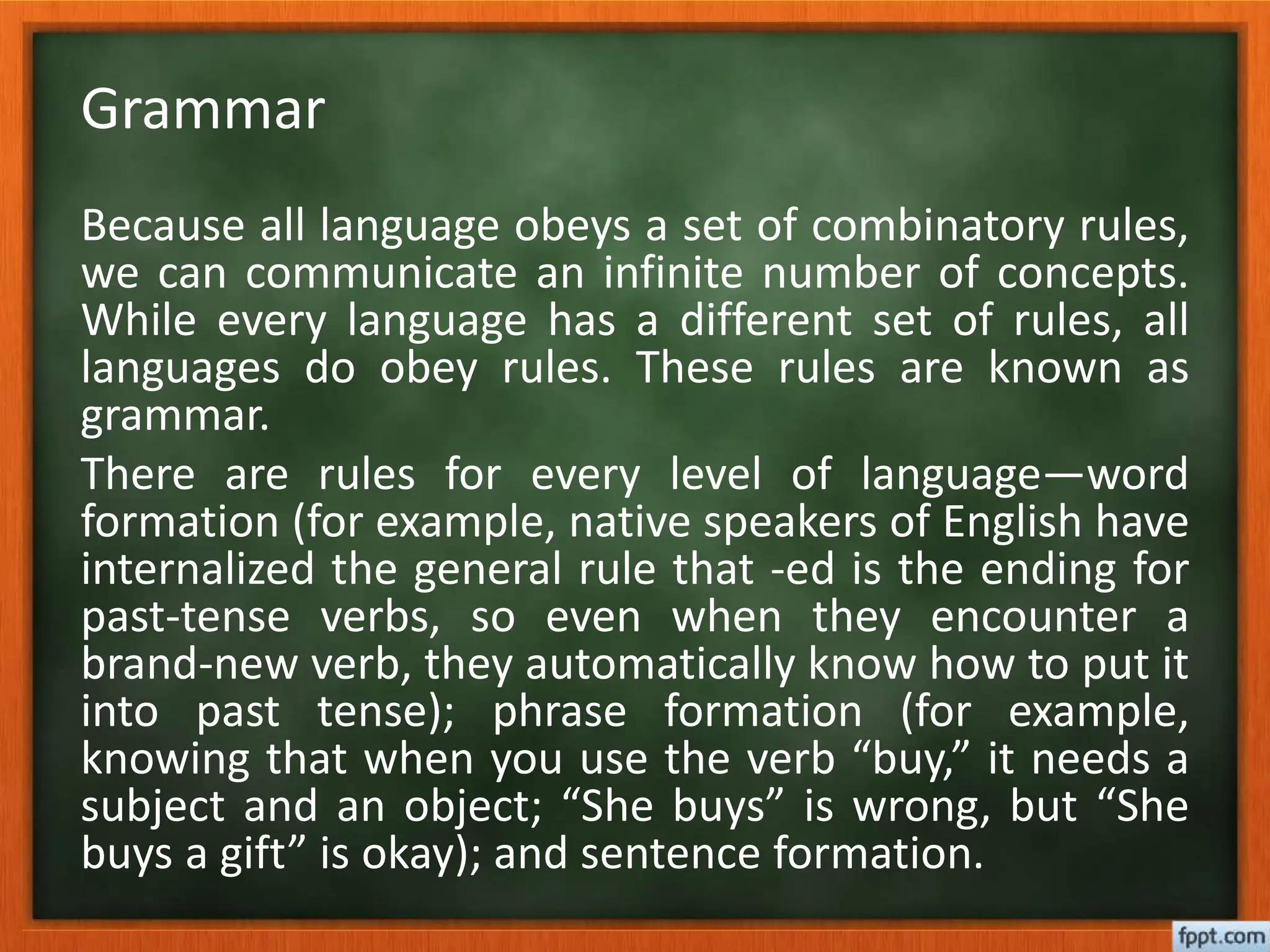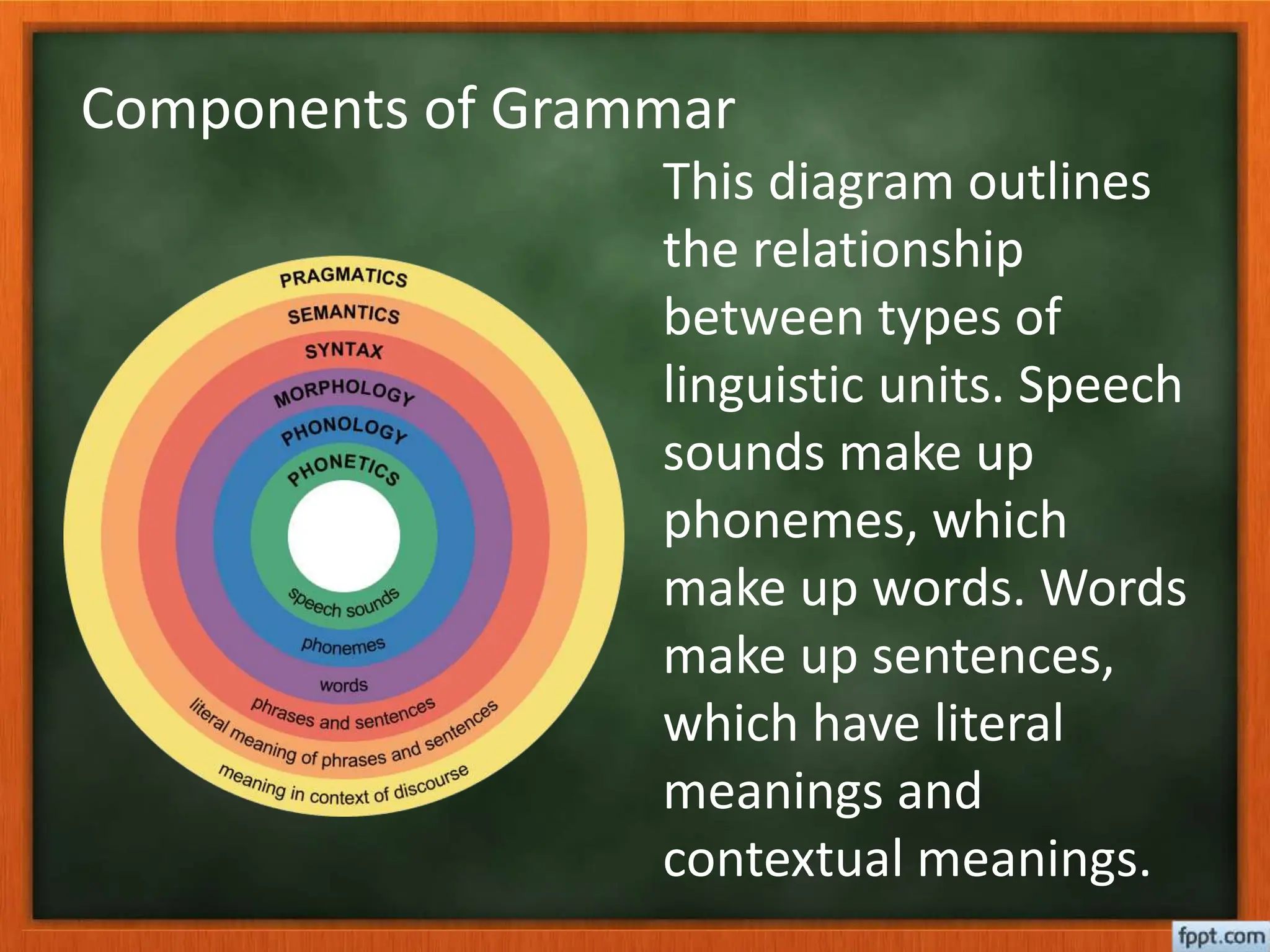This document discusses several key grammatical aspects of language including grammar, lexicon, components of grammar, phonetics and phonology, morphology, syntax, semantics, and pragmatics. It defines each area and provides examples to illustrate important concepts within each grammatical aspect of language.






















